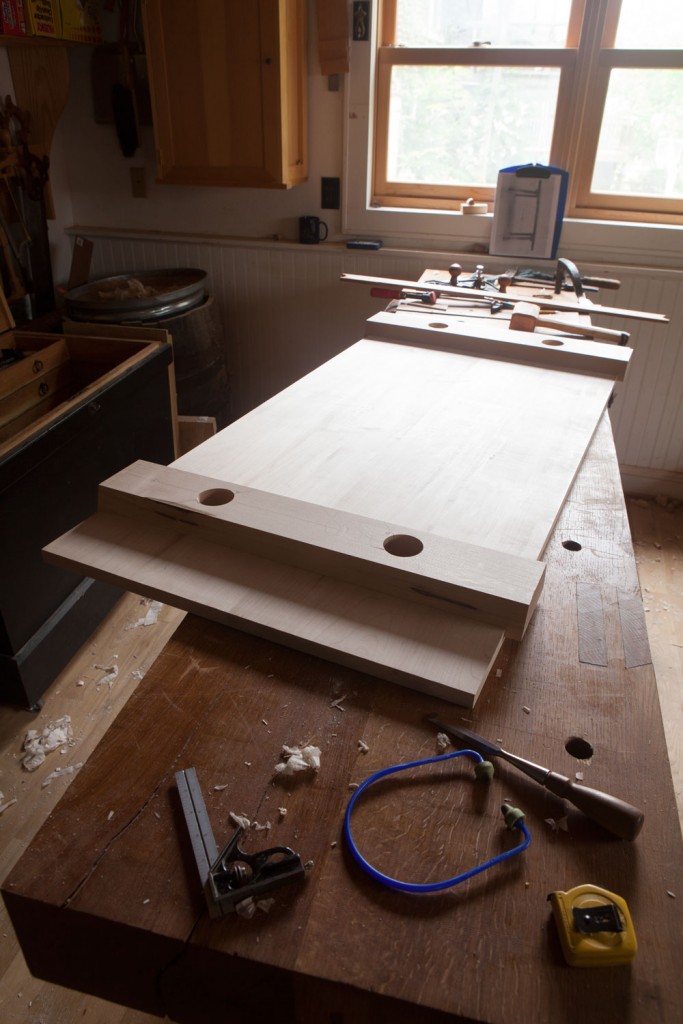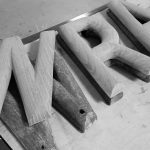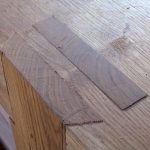We may receive a commission when you use our affiliate links. However, this does not impact our recommendations.
Yesterday was the first time in 20 years I wished for an electric sander.
I’m finishing up a new table design and am just about to finish all the surfaces before assembly. The only problem is that this maple trashes every plane iron after about two strokes.
I’ve seen this happen with exotics such as purpleheart that naturally have a lot of silica. And with a stick of Douglas fir wood that John Economaki of Bridge City Tools gave me as a joke. He called it unplanable, and he’s right. The reason is that it was a tree that had been blown down by the eruption of Mount St. Helens and became impregnated with silica by the explosion.
So who knows what the heck is going on with this maple. I can’t find any metal embedded in the wood.
What to do? Lots of sharpening. I’m going to get the surface as good as possible with planes and finish off with some hand sanding. So it’s going to be a long day.
— Christopher Schwarz
Here are some supplies and tools we find essential in our everyday work around the shop. We may receive a commission from sales referred by our links; however, we have carefully selected these products for their usefulness and quality.










After building a library full of Jefferson stacking bookshelves out of maple, I began referring to maple as organic steel. I love the crispness of the dovetails I cut, but it was a miserable beast to plane.
Send me a shaving and I’ll put it in an electron microscope to scan for silicon or other nasties.
I’ve heard that trees growing near to busy roads can absorb silica from the dust which is constantly kicked up by traffic. One of my early teachers refused to let us cut pallet wood on his tools, even with all metal carefully removed and triple inspected, and this was his excuse, that pallets are often made of this gritty roadside wood which is therefore graded very low even if it looks like superior stock. It wouldn’t surprise me if wood of this sort ends up in with the furniture-grade material from time to time, whether through negligence or because somewhere along the line somebody would just rather get a few more bucks for the log.
Sometimes the tools eat the maple….sometimes the maple eats the tools.
Hi Chris,
Maple has come to be a wood I shun. I just finished a set of dining chairs in very hard maple. I have made sculpted rockers, tables etc. in maple and after every job I tell myself “That’s the last time!”, but somehow I end up with a large supply of this “rock” maple in my shop. It has it’s advantages if you are interested in learning how to sharpen your tools to a razors edge twice a day;) Over here in Oregon we have the big leaf maple that works well, much softer, but tends to fray like cedar. My preference is walnut, mahogany perhaps stone, anything but that impenetrable maple at this point in time. Sometimes you get a piece of maple you just can’t win with. You plane, scrape, sand, sand and sand some more to get that hard won finish you are looking for. Then you go to get your can of finish only to return to a before unseen lateral scratch that proves to be irremovable. Best of luck on the table and thanks for my new book “handsaw essentials” loving it!!
Brian Noel